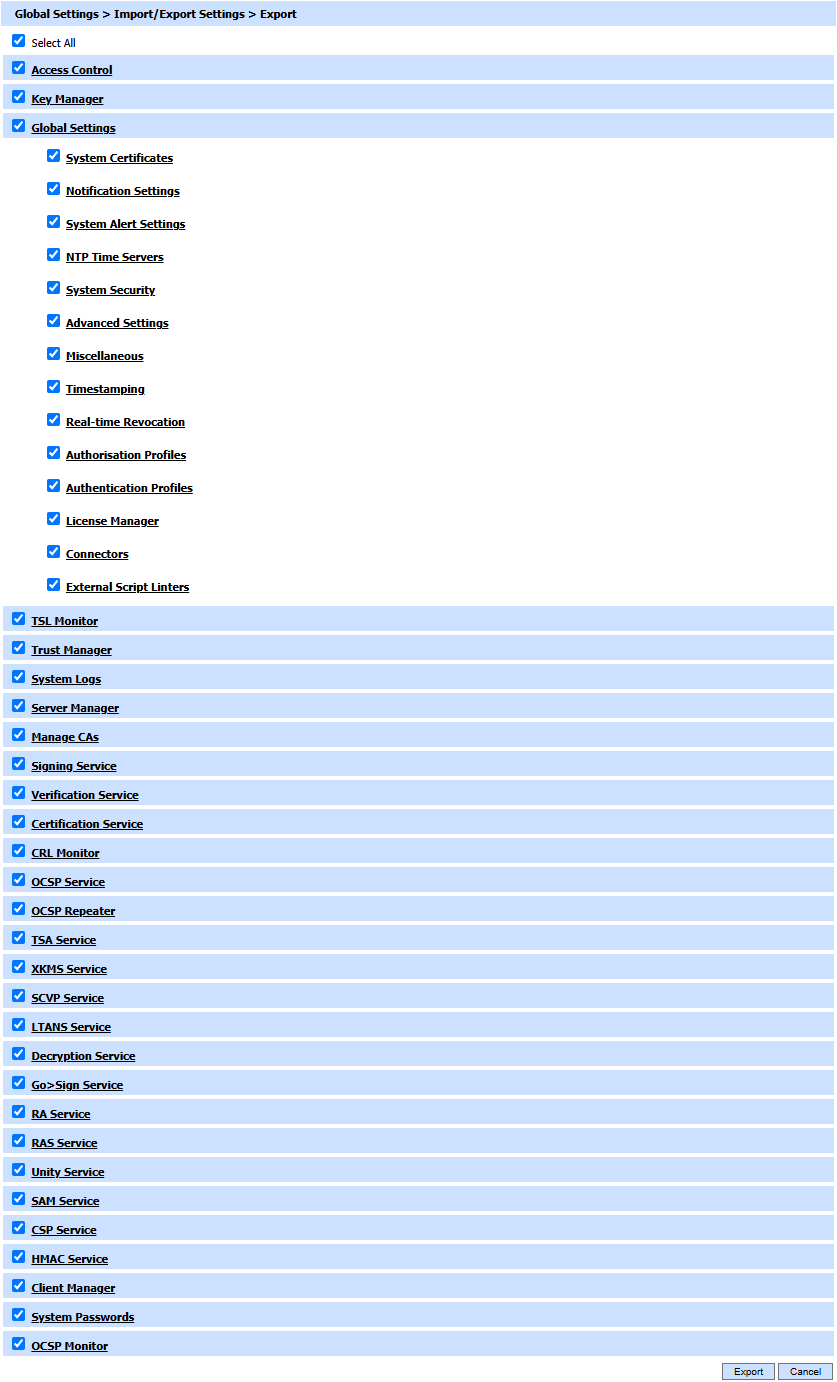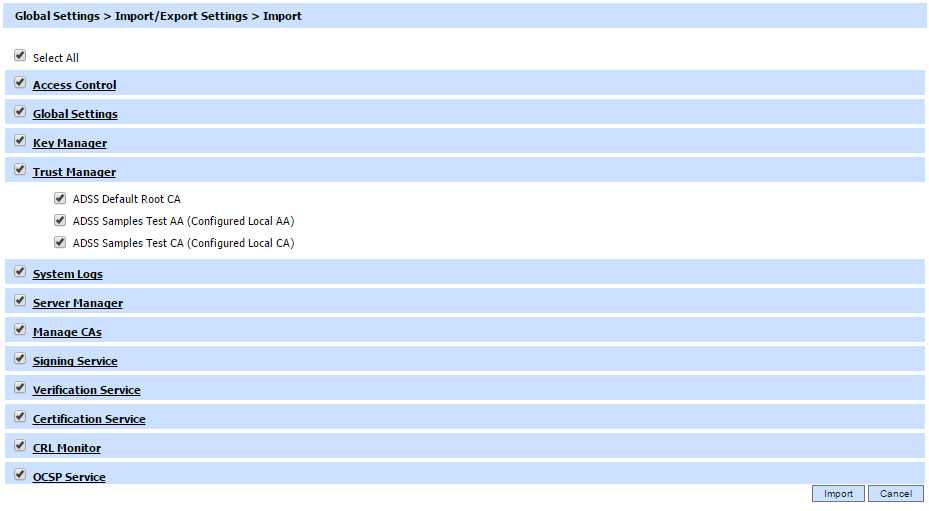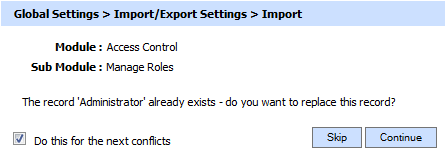Import/Export Settings
ADSS Server supports exporting all system configurations and also importing into another ADSS Server instance. Both ADSS Server instances MUST be using the:
- Same version of the ADSS Server product
- Same Master Key (generated at the time of installation)
- Same DBMS to be used e.g Microsoft SQL server etc
Either a full set of configurations or a selected sub-set of data can be exported in a file and then imported into another server instance.

Click Export button on ADSS Server instance to export selected configurations:

Select modules/sub-modules for the configuration to be exported and click export button.
|
|
The file will be exported with name adss_configuration.export, Change the extension of the file from .export to .xml e.g. adss_configuration.xml because only XML file can be imported in the ADSS Server. |
Click import button on the other ADSS Server instance to import configuration XML file.

|
|
If the size of the XML file is around 20 MB or more, then the Console memory should be set to at least 2048 MB during the installation of ADSS Server. |
Click Browse button to select configuration XML file and click Next button:
Select modules/sub-modules for the configuration to be imported and click import button. Please note that modules/sub-modules to be imported should be intelligently selected keeping dependencies in mind.
If a record already exist then following window will show up:

User can either continue to replace the existing record or skip it to leave it as it is. Check ''Do this for the next conflicts' if similar behaviour is required for the rest of identical records.
|
|
It is recommended to import configurations and keys using fresh installation of ADSS Server. This is important because upon importing configurations from another instance of ADSS Server running with a different database, the HMAC values for all database records are re-computed which takes substantial time. |
|
|
Be careful while exporting records of a module having dependencies on other module e.g. if you are importing signing profile and it is referring a TSA address configured in global settings then remember to export both signing profile and TSA address from global setting module otherwise you will face errors while importing this configuration file in another ADSS Server. |
|
|
Be careful while importing the System passwords as it will over-write all the passwords of the ADSS Server configurations. |
|
|
Remember to re-compute HMAC after importing the ADSS Server configurations. See the ADSS Server Installation Guide's section "Upgrading an existing ADSS Server instance" to learn how to re-compute HMAC. |
See also
NTP Time Monitoring
Timestamping
Connectors
Real Time Revocation
Notification Settings
System Alerts
High Availability
System Security
Authentication Profiles
Authorisation Profiles
License Manager
Advanced Settings
Miscellaneous Settings

